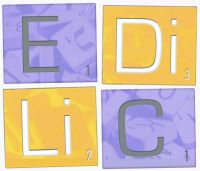Speaker
Description
Nous aborderons des approches plurielles, interdisciplinaires et translinguistiques en enseignement des langues (français et nêhiyawêwin) dans la province canadienne de la Saskatchewan. Pour ce projet, notre équipe est composée de trois professeurs à la faculté d’éducation (langues et littératies et éducation en plein air), deux coordinateurs (éducation autochtone et programme d’immersion française) d’une division scolaire en Saskatchewan. Le territoire du Traité 4 est le territoire des nêhiyawak, Anisinapek, Dakota, Lakota, Nakoda et la nation Michif. En septembre 1874, la Couronne et les peuples autochtones ont établi une entente nommée Le Traité 4. Malheureusement, le traité n’a pas été négocié d’une manière équitable et les promesses du Traité n’ont pas été respectées par le gouvernement (Daschuk, 2013). Par exemple, des politiques opprimantes et racistes existaient dont les pensionnats pour les enfants autochtones, où les langues autochtones étaient interdites ainsi que la culture et la spiritualité autochtone. En 2015, la Commission de vérité et réconciliation du Canada a publié un rapport avec 94 appels à l’action, incluant ceux soulignant nos responsabilités quant à l’éducation afin de respecter les cultures et langues autochtones. Dans notre travail avec les enseignants en Saskatchewan, nous honorons les pédagogies et philosophies autochtones (Cappo, 2024; Chrono, 2024; Donald, 2023; Kimmerer, 2013; Weenie, 2024) et nous reconnaissons le lien entre l'identité linguistique et culturelle et le bien-être (Cappo, 2024; Deer et Trickey, 2024). En mettant l’accent sur kiskinwahamâtowin (apprendre et enseigner ensemble), nous reconnaissons la valeur des langues et le fait de travailler à développer des relations respectueuses entre des peuples autochtones et allochtones et nos relations humaines et plus-qu'humaines. Nous travaillons ensemble afin de transformer l’éducation pour tous, vers un avenir plus éthique et relationnel, où les langues, les récits et l’apprentissage sur et par askiy (la terre) sont au cœur de l’éducation.
Content/contenu/Inhalt 2
In this conference presentation, we will discuss translinguistic, interdisciplinary and plurilingual approaches in language teaching (French and nêhiyawêwin) in the Canadian province of Saskatchewan to uphold historic and contemporary treaties between Indigenous and settler communities. Composed of three teacher educators from a university (Language and Literacy Education and Outdoor/Land-Based Education) and two coordinators from a local school board (Indigenous Education and French Immersion Education), our project team is situated in an urban centre of Saskatchewan in Treaty 4 territory. This territory is the ancestral home of the nêhiyawak, Anisinapek, Dakota, Lakota, Nakoda, and the Métis/Michif Nation. Treaty 4 is an historical agreement established between the Crown and the Indigenous people signed in September 1874. It is now recognized that the Treaty was not negotiated in an equitable manner (Daschuk, 2013). Promises made were broken by the Canadian Government, resulting in oppressive and racist policies as seen with Indian Residential Schools, where Indigenous children were forbidden from speaking their languages and practicing their culture/spirituality. In 2015, however, the Truth and Reconciliation Commission published a report with 94 Calls to Action, including those addressing education and language. Therefore, in our work with educators, we center Indigenous perspectives and philosophies in teaching across the curriculum (Cappo, 2024; Chrono, 2023; Donald, 2021; Kimmerer, 2013; Weenie, 2024) to honour the connections between language, identity and well-being (Cappo, 2024; Deer & Trickey, 2024). Highlighting the importance of practices of kiskinwahamâtowin (learning and teaching together), we will show the importance of uplifting languages towards respectful relationships between Indigenous and non-Indigenous people, and between humans and more-than-human relatives. To transform education for all, towards more ethical and relational futures, languages, stories and learning from the askiy (land) must be fundamental considerations.
References
Cappo, J. (2024). kiskinwahamâtowin: Learning and Teaching Together. In A. Weenie, W. Ermine, K. Lewis, I. Swan, M. Saskamoose, J. Cappo, & D. Pelletier (Eds.), Cree Pedagogy: Dance your Style (pp. 100-109). Canadian Scholars Press.
Chrono, J. (2023). Wayi Wah! Indigenous Pedagogies: An Act for Reconciliation and Anti-Racist Education. Portage & Main Press.
Donald, D. (2021). We need a new story: Walking and the wâhkôhtowin imagination. Journal of the Canadian Association for Curriculum Studies, 18(2), 53-63. https://doi.org/10.25071/1916-4467.40492
Deer, F. & Trickey, J. (2024). Well-being as a Core Focus of School Education: Conceptualizing Indigenous Well-Being. In T. Falkenberg (Ed). Well-Being and Well-Becoming in Schools (pp. 79-99). University of Toronto Press.
Daschuk, J. (2013). Clearing the Plains: Disease, Politics of Starvation, and the Loss of Indigenous Life. University of Regina Press.
Kimmerer, R. (2013). Braiding Sweetgrass: Indigenous Wisdom, Scientific Knowledge, and The Teachings of Plants. Milkweed Editions.
Weenie, A. (2024). You’ve been Given a Gift. In A. Weenie, W. Ermine, K. Lewis, I. Swan, M. Saskamoose, J. Cappo, & D. Pelletier (Eds.), Cree Pedagogy: Dance your Style (pp. 7-20). Canadian Scholars Press.
| Title/ titre/Titel 2 | askiy, the land is our teacher |
|---|

